jkarp
Well-Known Member
OK, so my pic generated a number of requests for a detailed write up of my little system so here it goes...
What is a Brutus 20? In a nutshell, it's a no-sparge, constant recirculation direct fired mash system. Lonnie Mac, the creator, has since taken his Brutus 20 page down for some reason but the original is reachable via archive.org here. It's definitely worth a read if you're unfamiliar with the concept. Right or wrong, superstition or whatever, I had found from my brewing experience over the years that my beers got a LOT better when I quit playing the efficiency game. The beers just tasted better when I worked to keep efficiency in the 70-75% range. When I stumbled across Lonnie's design, I knew its efficiency "limitations" were exactly what I wanted. I also immediately saw some simple design improvements I could make that would result in an extremely compact system that would allow me to keep my brewing indoors. I'm just not a fan of spending 5 hours in the garage in the heat of the summer OR when the snow's flying in the winter.
OK, so let me knock out a few of the questions I frequently get asked about my rig right off the bat:
So here's a cheesy diagram of the system. The kettle is plumbed to a HD bucket that has the pump and counterflow chiller inside. The CFC doesn't do anything until chill time, but having it permanently plumbed minimizes plumbing changes during a brew session (keeping drips to a minimum indoors) and it's extremely space efficient. The CFC output runs to the top of the MLT and the MLT output flows via gravity back into the kettle. Using gravity eliminates the 2nd pump from Lonnie's design.
Setup for mash (pic 1)
Setup for chill (pic 2)
Coming up next, more pics! Stay tuned...


What is a Brutus 20? In a nutshell, it's a no-sparge, constant recirculation direct fired mash system. Lonnie Mac, the creator, has since taken his Brutus 20 page down for some reason but the original is reachable via archive.org here. It's definitely worth a read if you're unfamiliar with the concept. Right or wrong, superstition or whatever, I had found from my brewing experience over the years that my beers got a LOT better when I quit playing the efficiency game. The beers just tasted better when I worked to keep efficiency in the 70-75% range. When I stumbled across Lonnie's design, I knew its efficiency "limitations" were exactly what I wanted. I also immediately saw some simple design improvements I could make that would result in an extremely compact system that would allow me to keep my brewing indoors. I'm just not a fan of spending 5 hours in the garage in the heat of the summer OR when the snow's flying in the winter.
OK, so let me knock out a few of the questions I frequently get asked about my rig right off the bat:
- Could this be scaled to 5 gallon? - Maybe. I did a lot of testing of the boiling ability of a single 120V 2KW element. 5 gallons seemed to be the limit for a good rolling boil. Considering a full 5 gallon batch would start with 6-7 gallons pre-boil, you'd want to do two 120V elements or better, go 240V. Also realize the 5 gal MLT will limit your mash size.
- Does the high watt density element scorch the beer? - No! I've done everything from pils to barleywine on this system and have never seen or tasted a hint of scorching.
- Can you do high gravity beers? - Absolutely. In fact, my efficiency varies more from the amount of adjuncts in the grist than it does wort gravity. I saw 74% on the last 1.100 barleywine I did.
- Can you step mash? - Sort of. It's more of a ramp than a step however. I've doughed in at 145 and recirculated the system up to 158 with good results. It takes 15-20 minutes to ramp through the mash range.
So here's a cheesy diagram of the system. The kettle is plumbed to a HD bucket that has the pump and counterflow chiller inside. The CFC doesn't do anything until chill time, but having it permanently plumbed minimizes plumbing changes during a brew session (keeping drips to a minimum indoors) and it's extremely space efficient. The CFC output runs to the top of the MLT and the MLT output flows via gravity back into the kettle. Using gravity eliminates the 2nd pump from Lonnie's design.
Setup for mash (pic 1)
Setup for chill (pic 2)
Coming up next, more pics! Stay tuned...





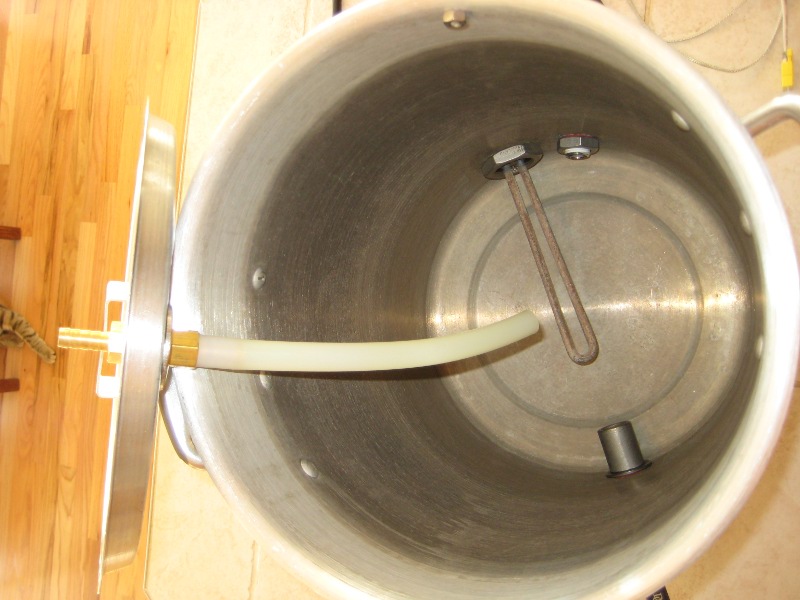

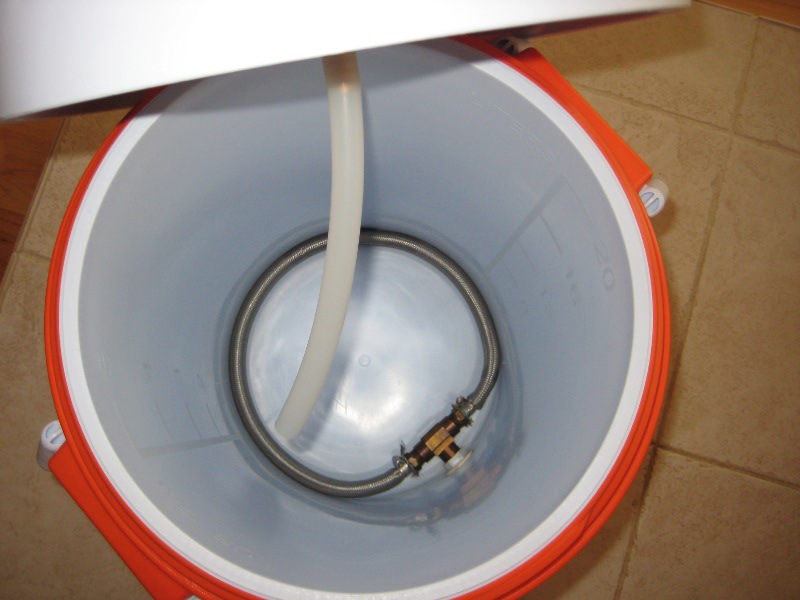
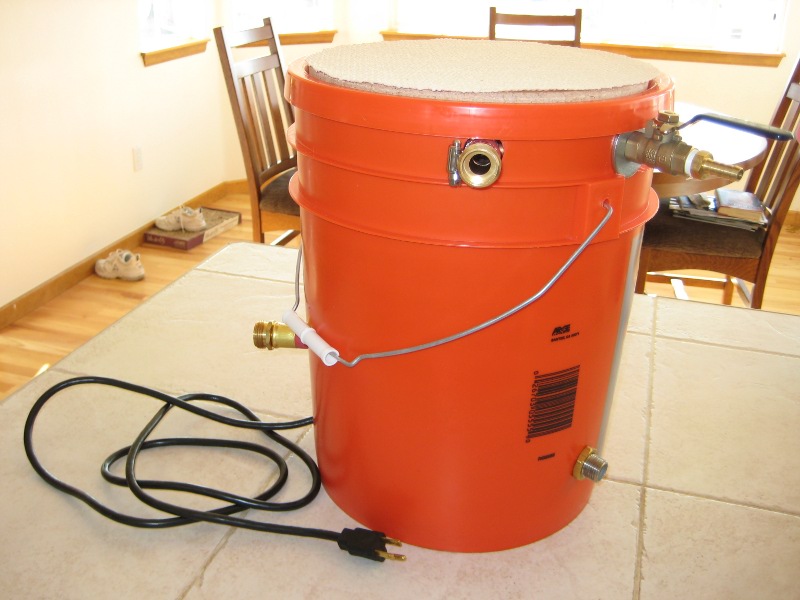

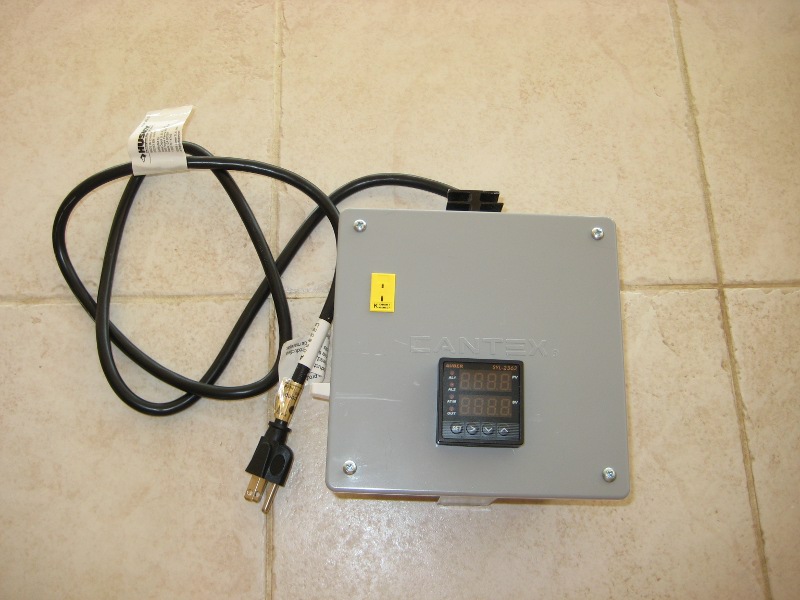
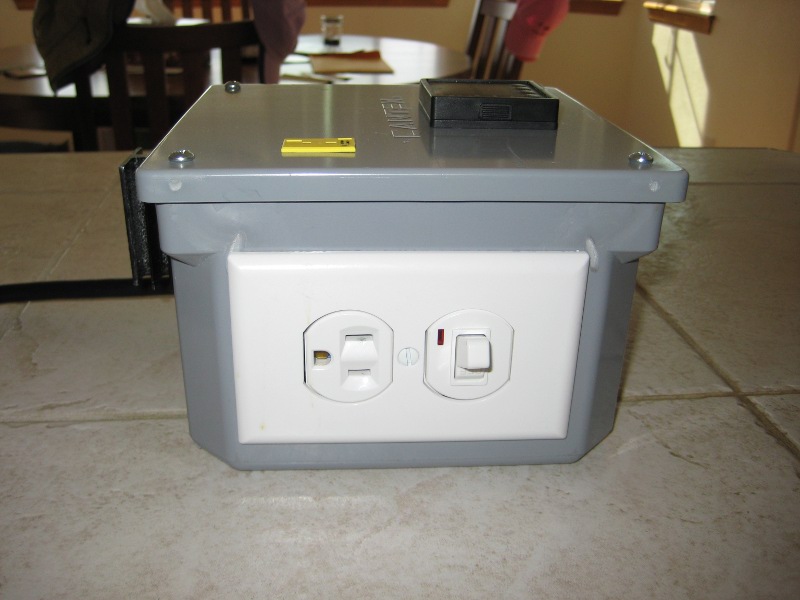


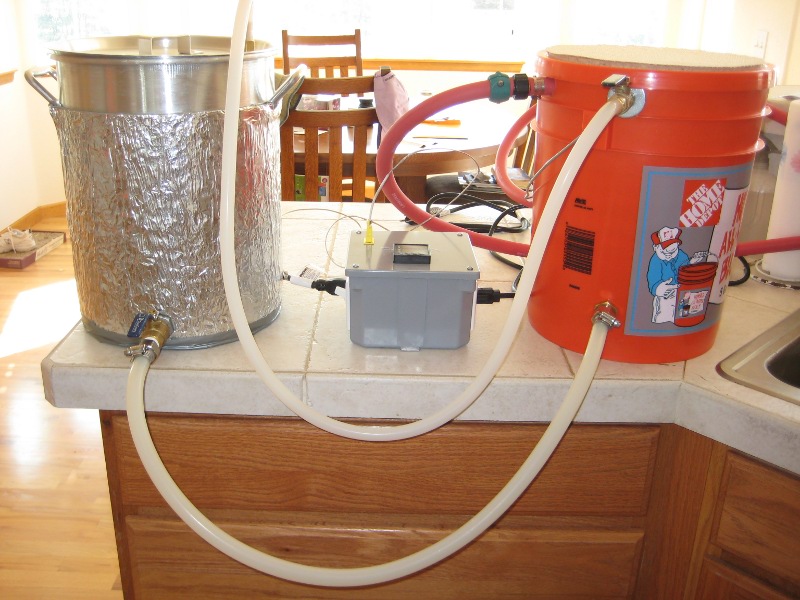
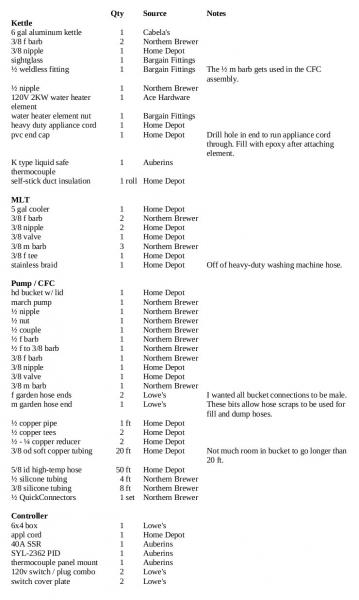



















































![Craft A Brew - Safale S-04 Dry Yeast - Fermentis - English Ale Dry Yeast - For English and American Ales and Hard Apple Ciders - Ingredients for Home Brewing - Beer Making Supplies - [1 Pack]](https://m.media-amazon.com/images/I/41fVGNh6JfL._SL500_.jpg)



